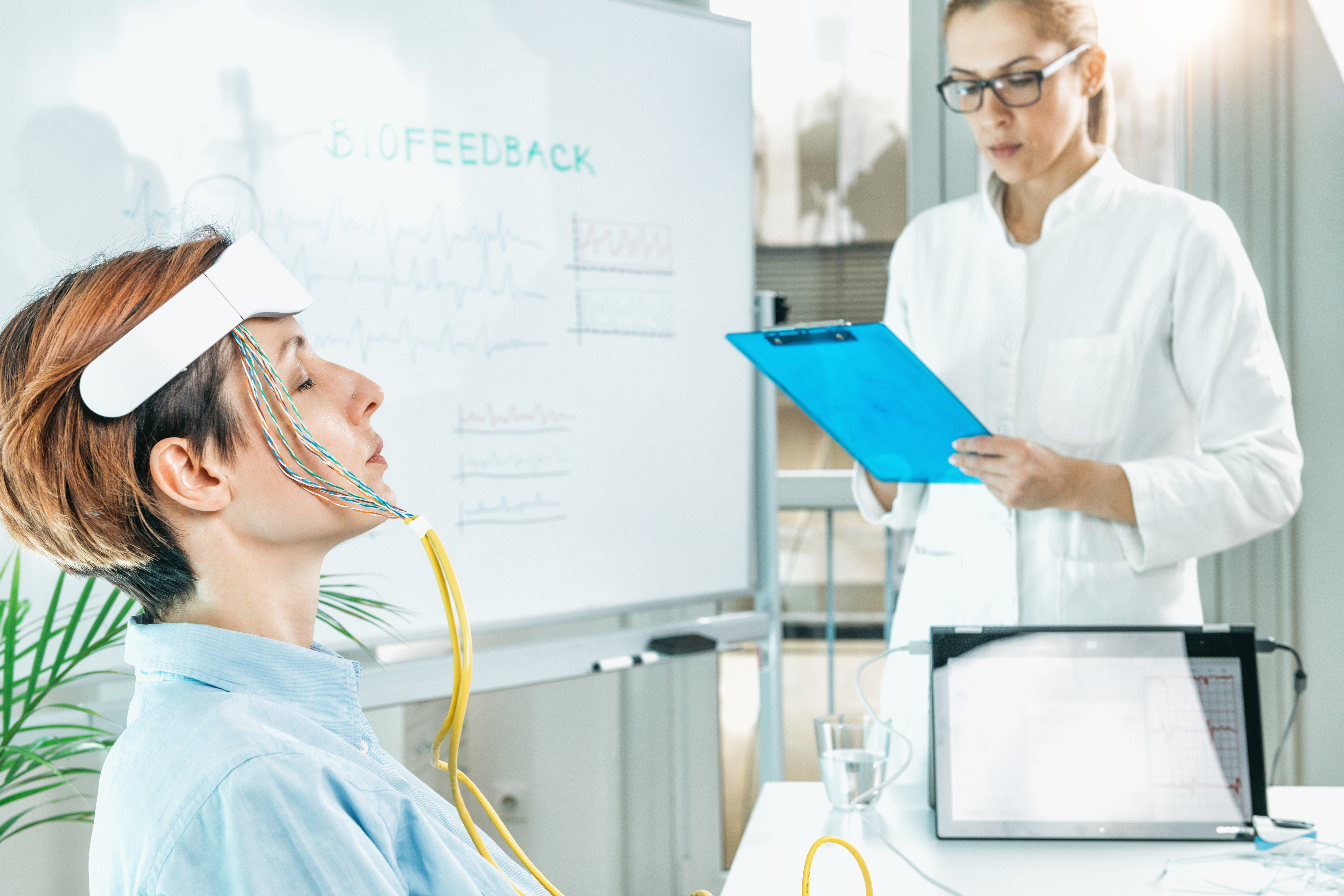How to Prepare for a Biofeedback Session
Introduction

Contact Profound Treatment to Learn More
Our team is standing by to discuss treatment options with you. Your call is completely confidential and no obligation is required.
Understanding Biofeedback
When you walk, move your hand to grab something, or turn your head to look out the window, these are all normal functions that you have control over. The body does other things that occur without any conscious thought. Common involuntary functions are your heart rate, blood pressure, and body temperature. Involuntary functions are affected by mental health, behavioral disorders, and other health problems. Biofeedback treats the automatic response to triggers that affect these conditions.
What to Expect From a Biofeedback Session
- Brain waves
- Heart rate
- Breathing rate
- Body temperature
- Muscle activity
- Sweating
Does Biofeedback Therapy Really Work?
Studies on biofeedback for anxiety have shown it has a high effectiveness rate. After biofeedback therapy, patients show significant decreases in State-Trait Anxiety Inventory (STAI) symptoms. These decreases in anxiety symptoms also had a lasting effect when measured again six weeks after treatment.3
Studies on biofeedback and substance abuse have shown promising results in treating negative behavioral patterns and brain activity caused by addiction.4
What Can Biofeedback Treat?
- Anxiety, depression, and post-traumatic stress disorder
- Attention-deficit disorders
- Breathing problems, such as asthma
- Digestive issues, such as constipation and irritable bowel syndrome
- Insomnia
- Pain, including headaches, fibromyalgia, and joint and muscle pain
- Diabetes
- Epilepsy
- High blood pressure
- Substance use disorders, such as alcoholism and drug addiction
Biofeedback is an approved treatment for many conditions like substance abuse and mental illness. Combining a biofeedback session with a well-rounded treatment program is likely to get great results.
What to Expect During a Biofeedback Therapy Session
How Long Do Sessions Last?
How to Prepare for a Biofeedback Session
Before Your First Biofeedback Session
Before your first biofeedback session, an excellent way to prepare is to speak with a medical professional, treatment center, or biofeedback therapist to see if it’s the best treatment for your needs. Talking to a medical professional about your condition will give insights into your struggles. They will recommend the best steps to take or recommend biofeedback therapists that can help.
Typical Biofeedback Session Steps You May Experience
- Set goals for treatment
- Measure brain waves and body activity
- Train the brain with positive feedback
- Repeat training
Who Performs Biofeedback?
What Happens During Biofeedback?
- Changing how you sit, stand, or move: Your posture and how you hold your body can affect thought patterns and your body’s response to stimuli. Many exercises during biofeedback will help improve how you sit, stand, or move to improve your well-being.
- Altering your breathing: Breathing techniques are taught during a biofeedback session to calm the mind and body. Breathing exercises act as coping mechanisms to manage stress and behavior-related conditions.
- Releasing muscles: Exercises during biofeedback may help release muscle tension that is common during anxiety, stress, or triggers.
- Using mindfulness and focus: Mindfulness or exercises that improve focus are also used during a biofeedback session to refocus the mind during stressful situations.
- Taking a test: Tests may be administered to gauge your response to stimuli or get an idea of how much progress is made from treatment.
Types of Biofeedback
Heart Rate Variability
Neurofeedback
Electromyography (EMG)
Blood Pressure Biofeedback
Galvanic Skin Response
Respiratory Response
Thermal Biofeedback

How Long Does Biofeedback Take to Work?
How Much Does a Biofeedback Session Cost?
Resources
- 1https://www.webmd.com/pain-management/biofeedback-therapy-uses-benefits
- 2https://www.ncbi.nlm.nih.gov/pmc/articles/PMC2939454/#B21
- 3https://pubmed.ncbi.nlm.nih.gov/8324040/
- 4https://www.ncbi.nlm.nih.gov/pmc/articles/PMC2259255/
- 5https://www.ncbi.nlm.nih.gov/pmc/articles/PMC4104929/
- 6https://www.mayoclinic.org/tests-procedures/emg/about/pac-20393913
Useful Links
Licensed by the State Department of Health Care Services.
Profound Healing Centers License No: 191092BP Exp. 5/31/26 (current/active)
Profound Healing Centers License No: 191092AP Exp. 7/31/25 (current/active)
Profound Treatment License No: 191047CP Exp. 1/31/27 (current/active)
Profound Treatment License No: 191047AP Exp. 8/31/26 (current/active)
Profound Treatment License No: 191047EP Exp: 3/31/26 (current/active)
Profound Treatment License No: 191047DP Exp. 9/30/25 (current/active)
Click here for more information about DHCS licensing.
| Start your healing today>> | |
|---|---|
| (310) 929-9546 |







